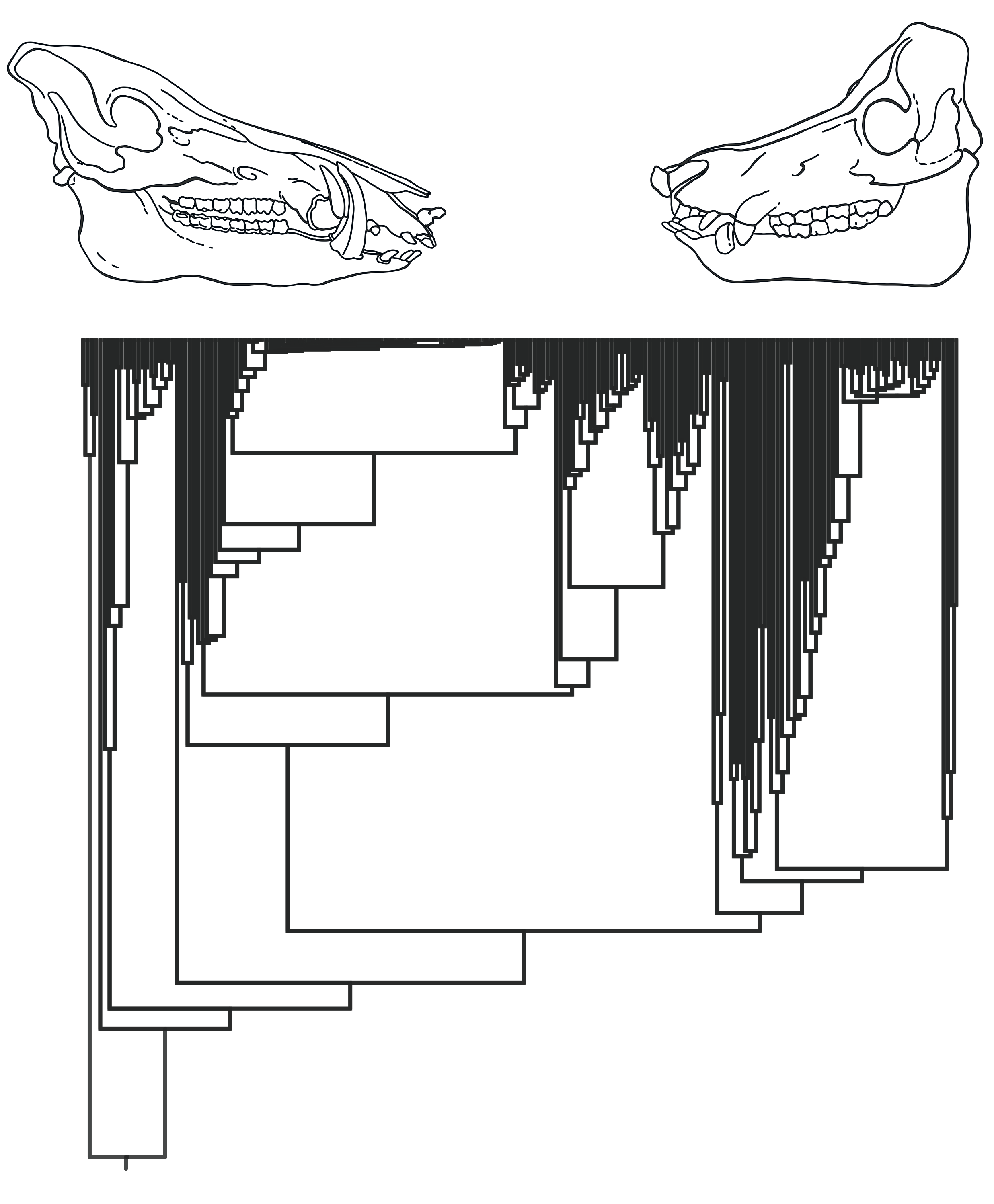Within the next decade an estimated 1million species are likely to face extinction because of human activities potentially triggering Earth’s 6th mass extinction. Conservation biologists, including many veterinarians, are making use of state-of-the-art scientific methodology to reverse this trend. In this course will examine how genetics is used as a successful tool in conservation biology. Specifically, we will review basic population and quantitative genetics concepts through examples of conservation programs that were made highly successful because of genetics. The aim of this module is to provide veterinary students interested in wildlife conservation with a good understanding of how genetics techniques can be mobilised to improve conservation programs.
- Dozent/in: Alberto Carmagnini
- Dozent/in: Laurent Frantz
- Dozent/in: Olaf Thalmann
After centuries of multidisciplinary research, domestication – mankind’s biggest experiment – still leaves many open questions. In this lecture series we will introduce various domestication concepts, summarize the current knowledge as well as shed new light into the history of some of the most important domesticates such as bees, cattle, horses or dogs. By inviting experts in the field we will mainly focus on the information hidden in the genomes of those animals and their respective wild ancestors. Ultimately, we are addressing the when and where or the how and why of domestication and thereby provide a comprehensive overview of how some of the wildest beasts became tamed.
- Dozent/in: Alberto Carmagnini
- Dozent/in: Laurent Frantz
- Dozent/in: Olaf Thalmann
Die Vorlesung bietet eine Einführung in die Kulturgeschichte der Haustiere basierend auf der Analyse von Tierresten aus archäolgischen Ausgrabungen in der alten Welt.
- Dozent/in: Veronika Goebel
- Dozent/in: Ptolemaios Paxinos
- Dozent/in: Joris Peters
Concepts drawn from the field of evolutionary genetics are now routinely used to inform applications in conservation biology, animal and human health, and sustainable agriculture. In this course we will first review basic concepts in evolution and genetics. We will then learn how these can be applied to understand how mutations arise, how can they lead to the formation of new species, and how they can be used to reconstruct the history of our planet's biodiversity. Lastly, we focus on a few case study to showcase how these concepts are and have been applied to major societal challenges, including to understand how we domesticated our pets, how and why species go extinct, or even how we can treat cancer and infectious disease better in the future.

- Dozent/in: Alberto Carmagnini
- Dozent/in: Evangelos Dimopoulos
- Dozent/in: Laurent Frantz
- Dozent/in: Joris Peters
Vergleichende Osteologie bei Haus- und Wildsäugetieren (Auswahl): Schädel, Zähne, Femur, Tarsalia, Metapodia
- Dozent/in: Veronika Goebel
- Dozent/in: Ptolemaios Paxinos
- Dozent/in: Simon Trixl
| Es wird auf die geschichtliche Entwicklung von Instrumenten, Apparaten und Techniken und deren Einsatz in verschiedenen (klinischen) Disziplinen eingegangen. Themen sind u. a.: Gynäkologie, Geburtshilfe, Chirurgie, Radiologie, Augenheilkunde |
- Dozent/in: Veronika Goebel
| Basierend auf der Analyse von Tierresten aus archäologischen Ausgrabungen erforscht die Paläoanatomie die Kulturgeschichte der Haustiere und das Mensch-Tier-Umwelt-Verhältnis in vor- und frühgeschichtlicher Zeit. Dies erfordert eine enge Zusammenarbeit zwischen den Natur- und Geisteswissenschaften, was anhand ausgewählter Beispiele aus der Forschung verdeutlicht werden soll. |
- Dozent/in: Veronika Goebel
- Dozent/in: Ptolemaios Paxinos
- Dozent/in: Joris Peters
- Dozent/in: Simon Trixl
| Vergleichende Osteologie bei Haus- und Wildsäugetieren (Auswahl): Vorderextremität |
- Dozent/in: Veronika Goebel
- Dozent/in: Ptolemaios Paxinos
- Dozent/in: Joris Peters
- Dozent/in: Simon Trixl
- Dozent/in: Michaela Zimmermann
| Vergleichende Osteologie bei Haus- und Wildsäugetieren (Auswahl): Schädel, Gebiß |
- Dozent/in: Veronika Goebel